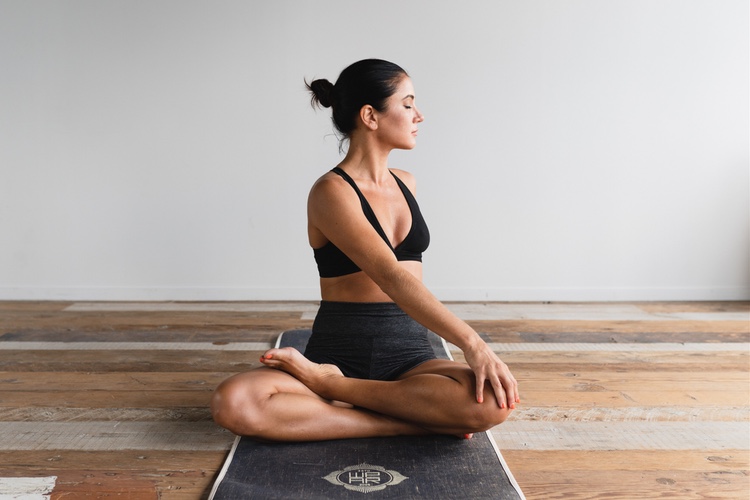
What is Yoga Therapy?
‘The goals of yoga therapy include eliminating, reducing, or managing symptoms that cause suffering; improving function; helping to prevent the occurrence or recurrence of underlying causes of illness; and moving toward improved health and wellbeing.’ Source: Yoga Australia
Over the years, I have seen Yoga used to help many people with many issues. Yoga – and yoga therapy in particular – can be very effective in the relief of many general or mental health conditions. Yoga therapy uses the tools of Yoga to create a Yoga practice tailored to address specific issues. These include:
- Anxiety Depression
- Stress and burnout
- Autoimmune disease
- Injury recovery
- Surgery recovery
- Digestion
- Sleep issues
- Mobility restrictions.
What happens in a Yoga Therapy Session?
An initial Yoga Therapy session is a one-on-one meeting with a yoga therapist. Time is spent talking and understanding your needs and agreeing the goal of the practice. The Therapist looks at the whole person, looking at physical, emotional and mental states and assessing which are most relevant to the presenting situation.
You and your therapist will then collaborate to develop an initial practice. The practice is trialed, fine-tuned and written down for you to take home. This practice can be made up of Meditation, Breathing Exercises and/or Yoga postures.
At each consultation your therapist will gather your feedback and the practice will be tweaked
depending on what has worked best for you. These private sessions may continue or you may choose to move into small group classes.
What’s the difference between a Yoga Therapy (Group) Class and a standard Yoga Class?
Yoga Therapy classes are kept small – less than 10 people – and are usually tailored for a particular group (eg: back care, or stress relief).
Each participant has had one or more private sessions and understands their own practice. The class is designed around the people in the session and their requirements. Modifications are given throughout the class to keep each person safe.
Therapeutic yoga usually has a strong focus on breath, with movement linked to the breath. This helps you become aware of your body and what’s happening within it. This awareness can then lead to better understanding of what your body needs.
Practicing this way also helps calm the nervous system. It helps mitigate the body’s flight and fight response and allows you to move into a state of rest and digest. Many diseases are worsened by stress. Helping to keep the mind and nervous system calm aids in feeling better no matter the circumstances.
How Does Yoga Relieve Anxiety and Depression?
Yoga helps by balancing the nervous system.
Our autonomic nervous system governs much of our physiology and is made up of:
- The Sympathetic nervous system (flight/fight/freeze).
- The Parasympathetic nervous system (rest, digest and regulation of the whole nervous system).
Anxiety and depression can severely impair both the sympathetic and parasympathetic nervous systems. Yoga can help rebalance them in several ways:
- We use breath to help regulate the systems in the body. Changing the flow of breath such as slowing the length of breath or using short retention of breath, when guided by a qualified yoga therapist, is a powerful tool which can significantly improve a person’s emotional state.
- Single focused meditation can, over time, change neural pathways in the brain and our over time, impacts our thought patterns and emotions. Self awareness and self reflection can further help us generate a positive perspective.
- We may use mantra and/or chanting. When you use your voice, you cannot think of anything else (try singing “Mary Had a Little Lamb” in your head and see how many thoughts you have while singing). By calming our mind in this way, we calm our emotions and body.
When these are done regularly, our patterns start to change. Rest and digest become the norm. The neural pathways of our brain start to change, new connections form and these reflect the new way of being.
The guidance of a yoga therapist in these ways can supplement other treatments and can help develop new patterns that can provide some relief to sufferers of anxiety or depression.
In recent Years quality research has been done in relation to the Health benefits of Yoga. The research ranges from working with cancer patients, in the area of mental health and a wide range of other conditions. Yoga Australia has compiled a list of some of the more recent studies here.
Author
Liama Aesha – Inspire Yoga Dee Why
Liama is a fully qualified yoga therapist registered with Yoga Australia. Liama believes that yoga therapy can be of great assistance to patients as a complement under the care of appropriate mental health, general health or other specialist medical professionals.

